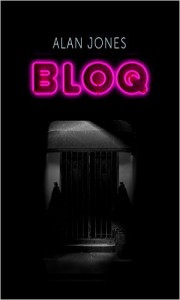Bloody Scotland 2023 – Sarah Hilary – Black Thorn
The countdown is on to Bloody Scotland 2023. This is Scotland’s International Crime Writing Festival and this year another stellar ensemble of writers will arrive in Stirling to discuss all things criminal, both fictional and factual. It’s one of the highlights of the year and if you’ve never experienced the friendly buzz of a book festival then I’d urge you to browse the programme and get along to Stirling if you can. For those that cannot attend in person there is also the option to join digitally as many events are available to enjoy online. You can visit the festival website here: https://bloodyscotland.com/
Black Thorn
Blackthorn Ashes was meant to be their forever home. For the first six families moving into the exclusive new housing development, it was a chance to live a peaceful life on the cliffs overlooking the Cornish sea, safe in the knowledge that it had been created just for them.
But six weeks later, paradise is lost. Six people are dead. And Blackthorn Ashes is left abandoned and unfinished, its dark shadows hiding all manner of secrets.
One of its surviving residents, Agnes Gale, is determined to find out the truth about what happened. Even if that truth is deadlier than she could have ever believed possible . .
I received a review copy from the publisher via Netgalley. My thanks to Fiona Browlee for the opportunity to join this leg of the Bloody Scotland blog tour.
Black Thorn has been a stand-out read for me this year and I’m counting down the days to the Bloody Scotland festival as I cannot wait to hear Sarah Hilary talk about this book. I lived this story from the initial feisty scenes to the shocking conclusion where secrets are revealed and lies exposed.
Readers are cleverly brought (by courier) to the Blackthorn Ashes and once they have arrived it seems impossible to leave – right from the early pages you feel this is a place which is not going to be filled with happy memories. I’ve been worried about how I am going to review Black Thorn as it’s exquisitly written and is very much a story you need to experience for yourself and with minimal spoilers.
We arrive at a neighbourhood barbeque. The new neighbours are getting to know each other but there’s trouble brewing too – one of their number has sustained an injury in his garden and blames the developers for shoddy workmanship. There’s little sympathy on offer but the lack of food and the chaotic organisation of this gathering does show some friction exists in the new residential development. Then just as the reader feels they are getting to know the players in this tale a shift, a shock and six of their number are dead.
That’s how you catch my attention. What happened? Who died? Why is Agnes sneaking into the houses of her dead neighbours when the police have made it clear nobody should be near the properties? Questions you need to have answered and that’s why you’ll keep reading.
Agnes is the stand-out star of Black Thorn. She drives the story and is the main focus of events. Agnes can feel there is something wrong at Blackthorn Ashes, she tries to warn people something isn’t right within the development. Unfortunately her family are pouring their hearts and soul into these new homes – they have to be the very best – and the last thing they need is Agnes “acting up” and ruining things. Agnes appears to have been a difficult child, her autism was a challenge for her family to cope with and her relationship with her mother and younger brother has been strained. Consequently Agnes’s attempts to alert her family to the problems she can feel at Blackthorn Ashes don’t get given much credence.
We learn Agnes had previously left the family home and moved to London with her partner but things didn’t work out for them and Agnes has returned, just as the exclusive homes her father has built are sold to new residents. She arrives back in the not-so-warm embrace of her family at a time when they were already extremely stressed over the challenges faced by a small firm with all their hopes pinned on a new venture but things aren’t quite going to plan.
Events in Black Thorn are not told in linear fashion. The narrative spins back and forward with most events taking place within a timeframe of just a few weeks, however, there is a lot happening and Sarah Hilary makes the reader wait while she teases out the story making sure she gets the very best anticipation infused to the story. This is a book where you trust the author to give you enough information to begin to form your own conclusions as to what may be about to occur only for another layer of backstory to be peeled back to reveal more gems which will entirely challenge your conceptions and re-think your opinion towards some characters. There’s a dark mystery to be solved here, there are strong and wonderfully realised characters and there is a tension and uncertainty for Agnes which runs through the book.
Black Thorn is a sumptious read. From a tragedy early in the story Sarah Hilary builds up suspicions, anxiety and heartbreak. This is seriously high quality crime fiction – I can only implore you to read it.
Sarah Hilary will be at Bloody Scotland on the Everybody Needs Good Neighbours panel – Saturday 16 September at 7:30pm in the Golden Lion. She will be joined by Kia Abdullah and Louise Candlish. You can order tickets here: https://bloodyscotland.com/events/everybody-needs-good-neighbours-louise-candlish-sarah-hilary-and-kia-abdullah/
Black Thorn is available in hardback, digital and audiobook format. You can order a copy here: https://www.waterstones.com/book/black-thorn/sarah-hilary/9781035003884


























